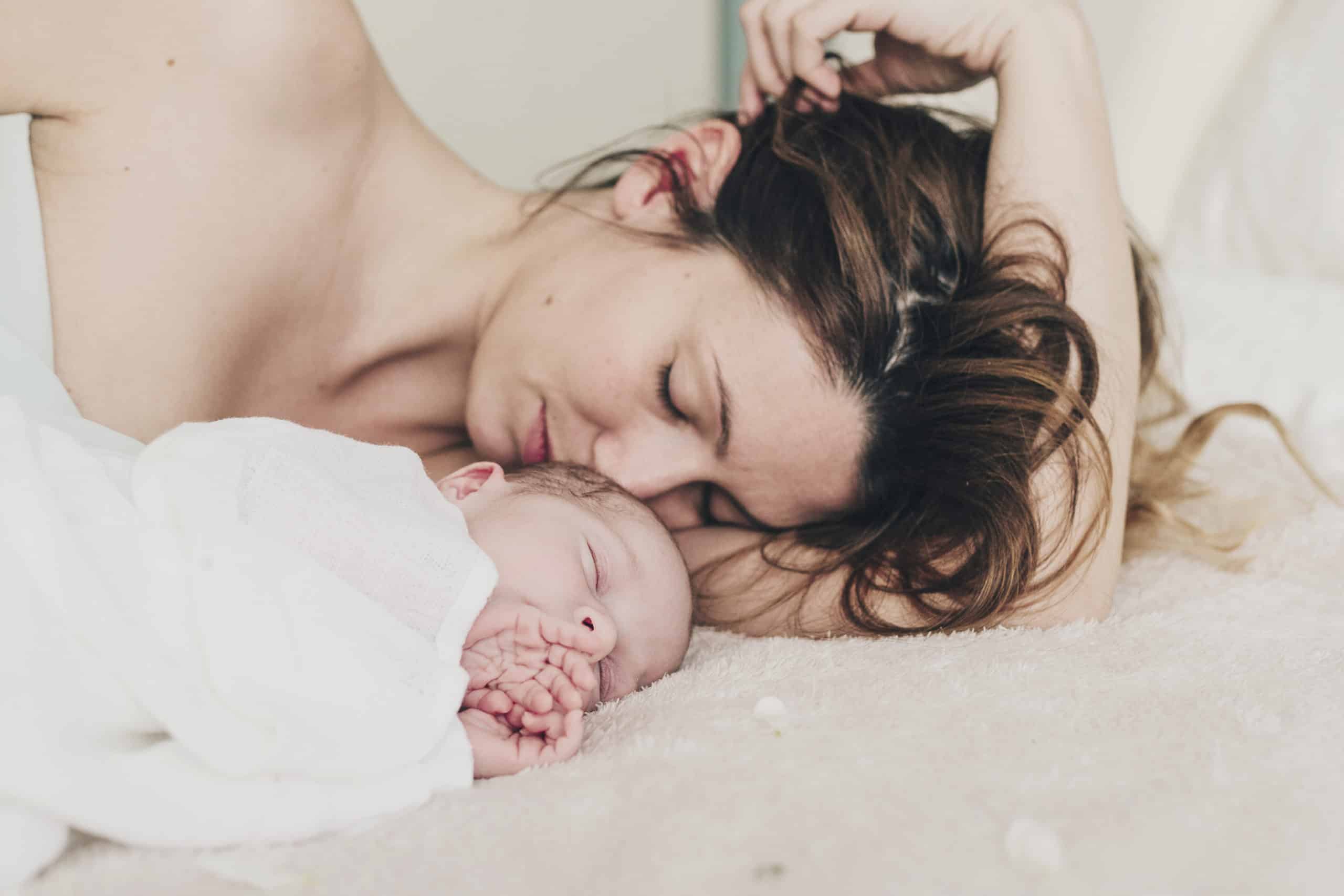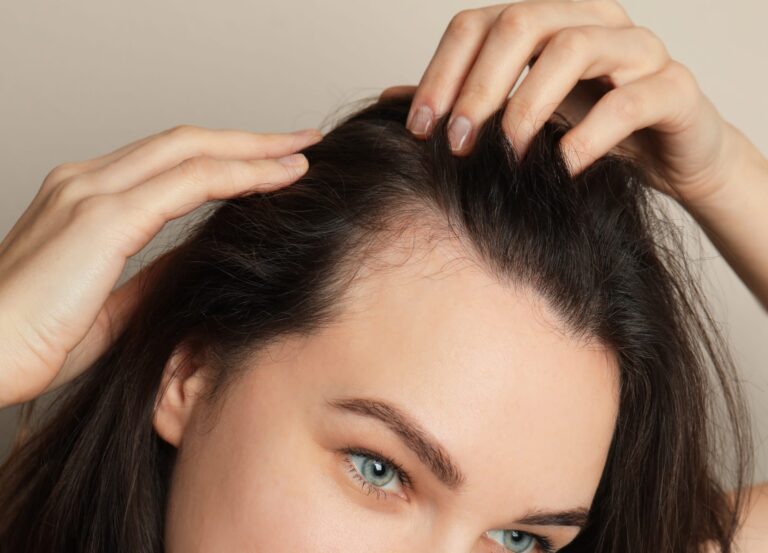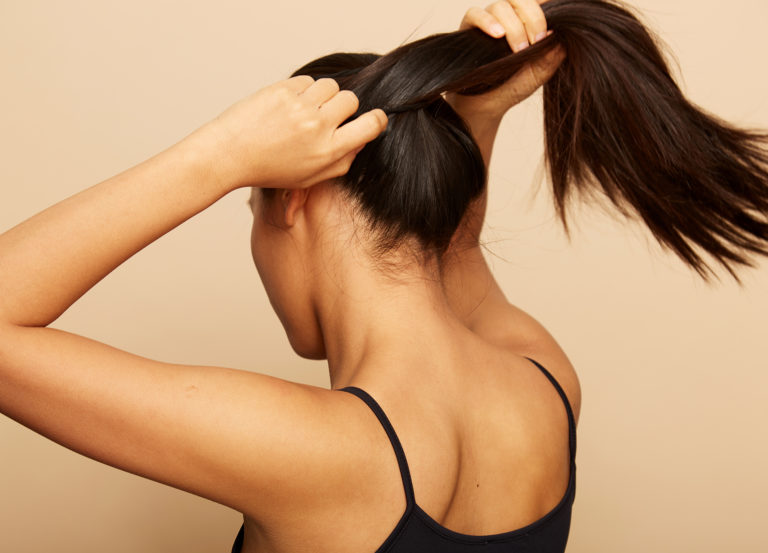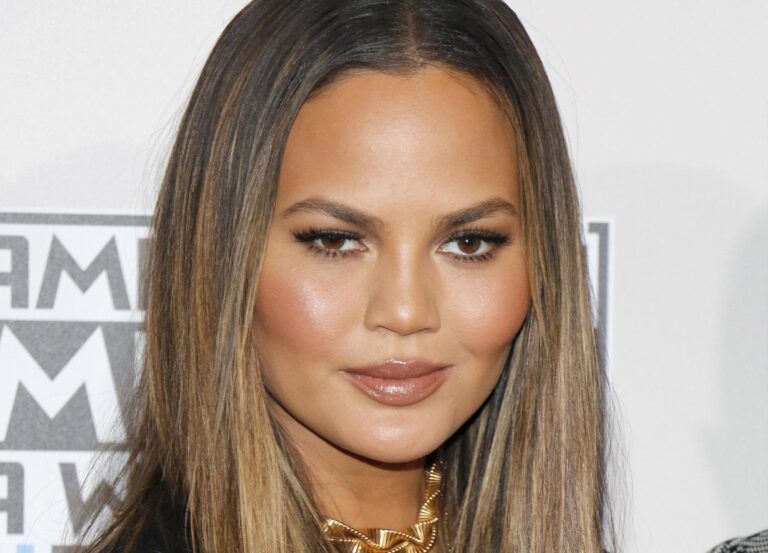Pregnancy and childbirth bring on dramatic physical changes, and your body doesn’t always shift back to its prepregnancy state as quickly as you’d hope. In the months following birth, postpartum hormones can create issues you may never have dealt with before, like hair loss.
During this time, many women experience excessive hair shedding, and especially for those who had the benefit of thicker, shinier hair during pregnancy, it can be rather startling to see clumps of healthy hair fall out. But take some comfort in knowing you’re not alone: “All your hormones are erratic [post-pregnancy],” says Dr. Michele Green, a board-certified dermatologist in New York City, and this is a completely normal side effect. Here’s why postpartum hair loss happens—and what you can do about it.
Why your hair is falling out
To understand why we lose our hair after giving birth, we must first understand the hair growth cycle. “Normally, 80% to 90% of your hair is in anagen, or the growth phase, while 1% to 2% [is] in catagen, the transition phase, and 10% to 15% [is] in telogen, or the shedding phase,” says Dr. Sejal Shah, a board-certified dermatologist in New York City. “So shedding is a normal part of the hair cycle.”
During pregnancy, higher levels of estrogen and progesterone cause the number of hair follicles in the growth phase to increase, which reduces shedding. “After delivery, the hormone levels return to normal, allowing the hair cycle to also normalize,” explains Dr. Shah. “However, a larger amount than normal may be triggered into the telogen phase when the hormone levels fall, so the normal hair loss that was delayed during pregnancy may fall out all at once.”
When does postpartum hair loss start?
Typically, postpartum hair loss starts two to three months after giving birth, according to New York City board-certified facial plastic surgeon Dr. Yael Halaas. That’s because the telogen phase, during which hair sheds, is approximately three months long, with the latter end of this time period resulting in the hair falling out. The difference can be shocking; in fact, the amount of hair stuck in the telogen phase at this time may be double what’s normal. “With postpartum alopecia, 30% to 40% of the hairs go into this phase,” she says.
How long does postpartum hair loss last?
Postpartum hair loss can last anywhere from two to five months, says Dr. Halaas. But that doesn’t mean your hair just looks thick again; rather, “it takes six to nine months to see the hair grow back,” she says. So, it’s a slow process—and requires some patience.
Related: Eyelash Growth Serums: Experts Explain How They Work and How to Choose the Best One
When you should see a doctor
Repeat after us: Postpartum hair loss is normal. Again, the sudden shedding might be alarming at first, but it’s a common experience for women who have just given birth. That being said, there are a few instances when the hair loss might be reason to see a doctor. “Clues that there might be something different [causing the hair shedding] are thinning without a dramatic increase in shedding, redness, itching, or bumps on the scalp, well-defined patches of hair loss, hair loss limited to a certain area of the scalp, or hair loss beyond 12 months [after delivery],” says Dr. Shah.
If you’re experiencing any of these symptoms, it’s a good idea to see your physician and rule out other health reasons for the shedding, such as a vitamin deficiency or a thyroid issue.
The at-home solutions
“There are steps you can take to promote healthy growth while your hair is going through this process,” says Dr. Shah. They aren’t magic cure-alls, but they can certainly help.
1. Eat a healthy diet
Dr. Shah asserts that it’s important to maintain a healthy diet rich in nutrients, vitamins, and protein in order to help improve hair health. Leafy vegetables, eggs, and beans are all recommended. Research also shows that foods high in omega-3 and omega-6 essential fatty acids can improve hair growth as well, so stock up on nuts like almonds or walnuts.
2. Skip tight hairstyles and excessive heat
“Avoid traumatic hair-care practices,” says Dr. Shah. “Limit heat and chemical [exposure] and avoid tight hairstyles. Ponytails, braids, or tightly wound buns can pull too hard on the hair root and cause more strands to fall out. Heat and chemical processes, meanwhile, can weaken hair, leading to splitting and breakage that gives an overall thinner appearance.
3. Try supplements
Dr. Shah also recommends taking vitamin or mineral supplements—particularly B12; vitamins C, D, and E; zinc; and iron. Vitamin deficiencies have been proven to exacerbate hair loss, so supplements can potentially help avoid additional shedding. Viviscal ($50) and Nutrafol ($75) are viable options for improving hair thickness as well, she says. Just remember to consult with your doctor before taking any supplement—especially if you’re still breastfeeding.
Related: I Tried a HydraFacial Treatment for My Scalp, and It Was a Game Changer for My Excessive Dandruff
The in-office fixes
If you’re looking for a more intense hair-boosting regimen, make an appointment with your dermatologist to try one of the following in-office treatments.
1. Platelet-rich plasma (PRP)
“First, for most women with postpartum [shedding], I advise waiting it out because the majority of the time, [the hair loss] will resolve on its own,” says Dr. Shah. “However, if someone wants to pursue in-office treatments, I typically recommend platelet-rich plasma.” PRP is a nonsurgical treatment that takes your own platelets, which are extracted from the blood, and injects them into areas of the scalp that are experiencing thinning. “It contains a concentration of growth factors, proteins, and other bioactive molecules that are thought to nourish and revitalize the hair follicle, therefore promoting growth.”
Studies have shown that PRP treatment can produce positive results for those with hair loss, and it has an 89% Worth it Rating on RealSelf. However, you’ll typically need up to four treatments, spaced four to six weeks apart, to see dramatic results, making this a rather pricey solution, given the average cost of $2,125. ”It takes about four months to see the hair grow, so you usually don’t see [major results] for at least four months after PRP,” says Dr. Green. “What patients should notice first though is that the hair will have a lot less shedding [from these treatments].”
2. Low-level laser therapy (LLLT)
Low-level laser therapy is another in-office treatment that’s dermatologist-recommended for hair loss. Studies have shown that LLLT is a safe and effective solution for stimulating hair growth by improving circulation and stimulating the scalp. As a bonus, the treatment is noninvasive, is painless, and includes no downtime. However, similar to PRP treatments, LLLT requires multiple sessions to see results and costs an average of $2,500.











